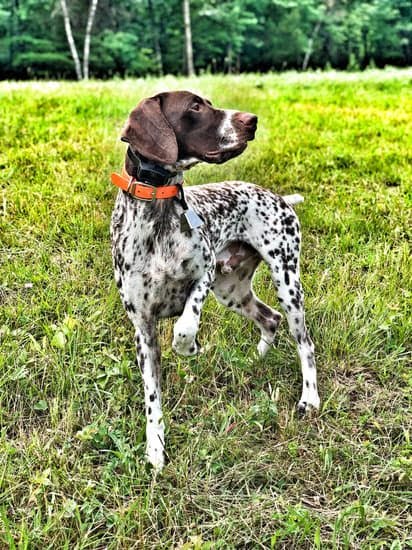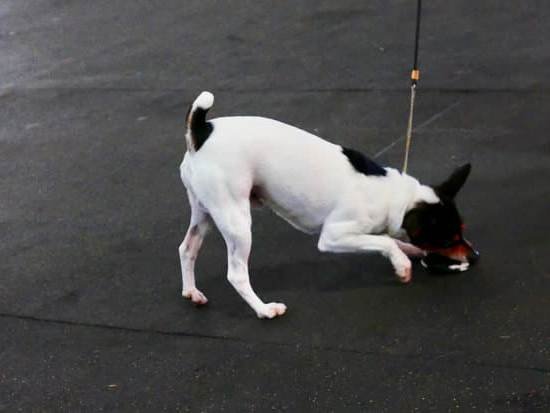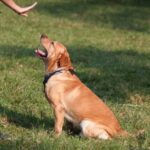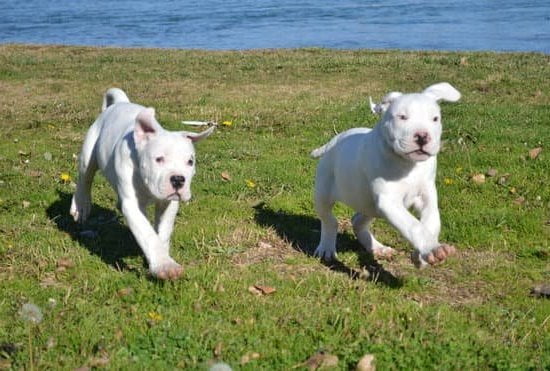Introduction
House-training an adult dog offers a great number of benefits. Not only does it provide the dog with structure and consistency, but it also allows them to become accustomed to their home environment. House-training also prevents accidents in the home, such as pooping indoors, which can lead to unpleasant odors and can damage furniture or carpets. Furthermore, it encourages good behavior from the dog by helping them understand that certain activities are unacceptable in the home. By providing structure and reinforcement to the dog through house-training, the owner is able to get their pet used to living in a pleasant and safe environment while they both reap the rewards of a well-behaved pup.
Investigating the Problem
When an adult dog begins pooping in the house, it can be an alarming experience for any pet owner. It is important to take some time to investigate why your dog may have started this habit. One possibility may be that your pet has developed a medical issue such as digestive or spinal problems, or urinary incontinence. If you suspect this could be the case, visit your vet immediately and get a professional diagnosis.
Another possible cause could be anxiety or fear-related behavior. Perhaps your furry friend was traumatized in their past home environment, so they are now feeling scared when they need to eliminate outdoors. Sometimes dogs with separation anxiety exhibit this same behavior when their human owners leave them unattended for too long. It’s important to rule out anything that may be causing distress in your pup’s life before training them out of it. Stress reduction techniques like massage and aromatherapy may help alleviate their anxiety and create a safe space where they feel more comfortable doing their business outdoors, rather than indoors.
Lastly, improper house training or lack of routine could play a role as well. Though we must remember that adult dogs take longer than puppies to learn new behaviors, with time and patience you can correct undesirable habits like indoor elimination by teaching appropriate house rules and providing consistent reinforcement for following those rules. A practical reward system with food rewards or verbal praise can do wonders for re-training an older pup!
Establishing a Supportive Training Environment
When training an adult dog to stop pooping in the house, it is important to create a supportive and positive environment. This means ensuring your pup receives enough physical feedback, like praise and affection when needed. It is also important that you provide your dog with consistency so they are aware of what type of behavior is expected from them. Consistency must be seen in the tone of voice you use for communicating with the dog, rewards for good behavior, and consequences for bad behavior. Additionally, you need to give clear boundaries to ensure your pup has a safe space in which he can relax and avoid getting into mischief. Lastly, make sure to set aside special time each day exclusively for training so that it doesn’t become stressful or rushed as a result of other activities.
Learning Your Adult Dog’s Potty Habits
One of the first steps in teaching your adult dog to stop pooping in the house is to pay attention to their potty habits. It can help you understand why they are pooping inside and identify any changes in their behavior when it comes to going outside. As soon as you notice a pattern or realize that something is different, try to adjust accordingly.
Examples of some potty habits you may want to keep an eye on include timing and location. Track when your dog tends to go, if it’s after meals, after wake-up time, or whenever there’s a change in activity around the house. You can also observe where they tend to go , like on the grass or pavement Of course, check for signs of distress such as pacing or uncharacteristic restlessness before they relieve themselves – these could be a sign that they need to go out more often or perhaps making a different area more attractive would help them relieve themselves while outdoors and away from the house.
Once you have identified patterns and gathered insights into your adult dog’s potty habits , you will be better equipped to introduce regular routines in order to manage and discourage indoor pooping . Set aside times during the day when they can go outside, this will give them regular opportunities for release and reinforcement that outdoors = proper bathroom business. In addition, use positive reward-based training methods; praise them with treats or verbal affirmations each time they obey successfully and take them for occasional walks around town or outdoors for further encouragement .
Maximizing Potential for Potty Training Success
When potty training an adult dog, it is important to establish a routine. This means having designated times for bathroom breaks and providing the same location for your pup to go. If there is an accident inside, do not rebuke them – instead clean up after it and use positive reinforcement when they are successful outdoors. Depending on the age of your dog, it might not be feasible to enforce crate training upon them; however, if you’d like to try it can help “reset” their bathroom habits. Ease into crating more gradually by letting them stay in the crate with a toy or bone while you are home before attempting to leave them alone while away.
Finally, during potty training sessions be sure to keep distractions at bay. Ferocious barking or other surprises could break their concentration and lead them away from the provided potty area too soon. When outside, encourage your pup with rewards like treats or enthusiastic praise when they demonstrate desired behavior so as to encourage future progress in housebreaking.
Designing an Accessible Outdoor Potty Area
Creating an accessible outdoor potty area for your adult dog is a great way to train him/her to stop pooping in the house. Ideally, this area should be close to the house and free of disturbances like loud construction, animals, or children. If possible, it should also have an element of privacy—like a privacy fence. The area should be away from wind and rain and provide a comfortable surface for your pet to walk on such as grass or gravel. Finally, add some positive reinforcement materials like toys and treats that your dog can use after they successfully do their business outside. Make sure the space is clearly marked with signs or flags so your pet knows which area is designated for bathroom breaks. Utilizing these helpful tips will ensure your pet has a safe and accessible potty area that he/she can easily find when nature calls!
Establishing Positive Feeding and Potty Schedules
Having a positive feeding and potty schedule for an adult dog pooping in the house is an important part of getting it to stop. The schedule should be customized based on the individual dog’s needs and activity level. Start by setting regular meal times, which should provide a timeline for when your pup will need to use the restroom. Dedicate certain parts of each day to providing your fur baby with regular trips outside, following their eating schedule as closely as possible. You can take them out first thing in the morning, during lunchtime, after dinner, and just before bedtime. Additionally, consider taking them out after every nap or whenever they exhibit signs that they need to go like sniffing around or circling incessantly.
If you create set times throughout the day that are devoted exclusively to potty activities, your dog will begin to understand when they should expect a trip outdoors. Make sure while taking them outside they have plenty of time without distractions since young puppies tend to take longer if they become too distracted with their environment. Each time they go number two in the designated spot reward them quickly with treats while also praising them with words and petting them lovingly to further reinforce the behavior. Doing this consistently will help your adult dog recognize that pooping outside is preferable compared pooping inside and can even help slightly modify its behavior over time.
Positively Reinforcing Good Potty Habits
When training an adult dog to not poop in the house, it is important to create a positive environment that encourages the desired behavior. Start by getting your pet accustomed to your voice and hand gestures for reinforcement. Provide verbal praise when your pet goes outside to do its business and give them treats for successful elimination outdoors. If accidents occur, simply clean up without scolding or punishing your dog; punishment only works to make the problem worse. Make sure you are providing enough daily exercise and playtime for your pet so they have an adequate outlet for their energy; more frequent trips outside may be needed in the beginning stages of training. Finally, be sure to praise whenever good behaviors are displayed and ignore any bad ones. This will help build trust between you and your pet, allowing you to keep reinforcing proper potty habits in a positive manner over time.
Dealing with Accidents Indoors Effectively
When training an adult dog to stop pooping in the house, accidents will happen. Being prepared and having a plan of action ahead of time can help make cleaning up and managing indoor pooping easier. First, it is important to identify any underlying cause for the behavior. Possible causes may include medical issues, stress, or even boredom. If any of these apply in your situation, work with your veterinarian to address the underlying cause before attempting any training or behavioral modification plans.
Second, you should create a plan for how to handle indoor accidents. Cleaning supplies such as paper towels and antibacterial spray should be kept handy in case messes occur while you are away from home so they can be dealt with promptly and efficiently. Additionally, ensuring that the area where “accidents” have occurred is thoroughly cleaned with enzymatic solution will eliminate lingering odors that may attract additional episodes. Teaching your pup proper potty skills relies on consistent reinforcement — if present during messes indoors — praising them for going outside instead sets a better example and guides your pup towards understanding what behavior is expected from them. Establishing consistent potty times and places also eliminates any confusion was to not when or where it is suitable to take care of their bathroom business.
Extra Tips for Dog Owners Who Are Struggling to House-Train
There are several extra tips that can help dog owners who are struggling to house-train an adult dog. The first step is ensuring the pet’s environment is appropriate for training. This means checking to make sure the area where the pup relieves itself is clean, comfortable, and properly sized. Be sure to stay consistent when taking the pooch outside to go so they learn what is expected of them. Additionally, establish a regular routine for feeding as well as potty time. Regular potty times should also be accompanied by verbal cues so your pup recognizes specific phrases associated with going outside or using the bathroom indoors if you prefer that method. You can also provide rewards or positive reinforcement anytime your pet does their business in an acceptable place as this will encourage them to continue repeating these behaviors until they become habits. Finally, stay patient with your pup during training and do your best not to scold them if accidents happen – these occurrences are natural parts of house-training and should be corrected gently while offering praise and motivation when they succeed in following commands or preferred behavior patterns.
Summary
Any dog can be trained to use the restroom outside. Training an adult dog to poop outside is no different than training a puppy, but it does take patience and time. It’s important to understand some of the key benefits as well as the proper steps to begin training your adult dog to relieve itself outdoors.
Benefits of Teaching Your Adult Dog to Poop Outside:
The most obvious benefit of teaching your adult dog to poop outdoors is that it eliminates messy messes inside your home. Potty accidents are unpleasant for both you and your pet and can set back their overall potty training progress and cause them stress. In addition, it’s much healthier for both you and your pet if they use the bathroom outdoors in order to avoid bacteria and virus transmission between humans and pets.
Steps for Training Your Dog to Use Restroom Outdoors:
1. Establish a Routine – Establish a specific time each day when you will take your pet out for a potty break. This could be once or twice each day or even more depending on your schedule and that of the dog’s. When leaving the house take the pup with you so they become familiarized with going outdoors when needed.
2. Consistent Place Designation – Choose an outdoor area near your house that will be designated as their outdoor relieve spot. Make sure stay consistent in where they go off leash every single time and use positive reinforcement techniques whenever they successfully eliminate there such as giving them treats or verbal praise when they do their business outside. Doing this helps your pup become aware that pooping outside is good behaviour!
3. Young Pups – Puppies tend to need more frequent relieving sessions than adults due to their developing bladder muscles so make sure provide plenty of opportunities during the day where possible for them safely eliminate without being punished in case there are any accidents along the way before they learn how it works!

Welcome to the blog! I am a professional dog trainer and have been working with dogs for many years. In this blog, I will be discussing various topics related to dog training, including tips, tricks, and advice. I hope you find this information helpful and informative. Thanks for reading!





